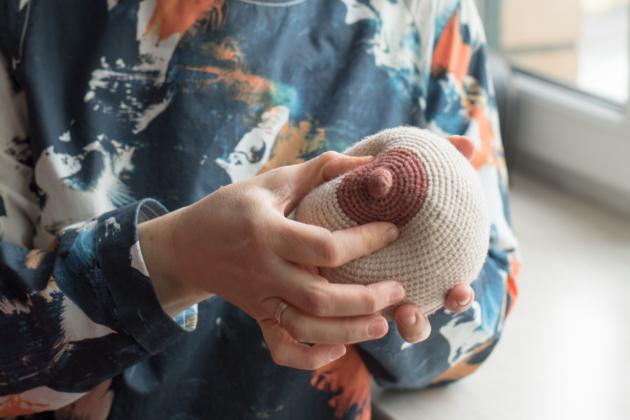Your Breastfeeding Questions, Answered
Breastfeeding has been in the news– in June, the AAP released new breastfeeding guidelines, and August is National Breastfeeding Month. This attention reinforces how we all need to broach the topic with sensitivity and care. There are many decisions to make around breastfeeding (or not), and we took this opportunity to ask new and expecting moms to share their questions, and boy (or girl!), did they deliver? So, we called upon a few experts to get the answers.
Answers from mom of two, Annie
What do I really need to buy and have ready before the baby arrives?
In the age of on demand delivery, I wouldn’t overbuy anything. Everyone’s needs will be different. That said, there are a few things I would recommend having on hand.
- Nursing bras– buy one to start and buy the rest once you know what size you’ll need. The ones with clasps and clips are great for support, but I love having the soft pull-down bralettes for sleeping and lounging.
- Pumping bra–have one on hand and bring it to the hospital. Chances are you won’t need to pump at the hospital, but if you do, you’ll be glad you have it!
- Get a pump and learn how to use it– my experience with my first baby was that I URGENTLY needed the pump as soon as I got home from the hospital, and I was figuring out how to use it in what felt like “crisis mode.” Learn more about how pumping works and how much milk you should pump here.
- Haakaa– They’re not expensive, and they’re good to have around for hand expressing.
- Breastfeeding pillow– These are a big help for breastfeeding or bottle feeding, especially in the early days. I loved my “My Brest Friend.” Hot tip: bring it to the hospital if you have room!
Once the baby has arrived, how do I know if/when I need professional assistance?
From my experience, I would recommend getting professional assistance right away. If you have the insurance coverage and can afford it, there is no reason not to get help. With breastfeeding, if you wait until there is a problem, you might end up in a lot of discomfort.
For my second baby, I reached out to my lactation consultant and told her when I was due. We arranged that I would let her know when I was in labor and set up an appointment for the day I came home from the hospital. It was incredibly helpful.
Note: Our lactation consultant Kim noted that connecting with a lactation consultant ahead of time sets expecting parents up for success. She recommends setting up a pre-delivery consult for around week 36 of pregnancy.
>> Learn more: What to do if you’re only pumping 1 or 2 oz every few hours
What are specific things I can ask my partner to help with to make my life easier?
Feeding a baby is a lot of work. It takes a ton of time and happens at crazy hours. And, if you’re primarily breastfeeding it can be isolating. If you have a partner, they should be very involved.
If everything is going smoothly, you can divvy up tasks. You feed the baby, then they burp the baby, change their diaper and put them back down.
With my first, feeding was difficult. I was using heat pads and massage while feeding to stimulate milk flow, and my husband helped with all of it. He would prep the heating pads, stand behind me while feeding and help do the massage, and he would use a wet washcloth to help keep the baby awake.
Also, your partner should be washing everything. There is so much washing to do– pump parts, bottles, you name it. If you’re bottle feeding, having your partner develop a bottle feeding relationship with the baby is both helpful, and a nice way for your partner to bond with the baby.
>> Learn more: What to do if your baby refuses to breastfeed but will take a bottle
Answers from a Lactation Consultant, Kimberleigh Weiss-Lewit, IBCLC
Is there anything I should look out for prior to baby’s arrival? Or anything I need to do to prepare for breastfeeding?
In the first trimester, you might notice your breasts are more sensitive. In the second trimester, you might notice a little leaking of colostrum, which is the early milk, it looks yellow. In the third trimester, some women will experience leaking of colostrum. If you don’t notice colostrum, do not worry! This doesn’t mean you won’t have it.
In general, there’s nothing you really need to do to get ready. Pregnancy is how your body prepares for feeding.
There are some conditions that may make it difficult to produce enough milk. If you have a history of breast surgery, gestational diabetes, had trouble conceiving, or PCOS, you should have a conversation with your care provider ahead of time so you can have a team approach with your provider and an IBCLC for when your baby arrives.
What are common things that could go wrong? When they do go wrong, what do I do?
The most common things I support new parents with are latching, questions about milk supply and pain while breastfeeding.
Latching
If your baby is having trouble latching early on, don’t panic. It can take time for your baby to learn a deep latch and start nursing well.
Milk supply
First, some general tips: you will start out with colostrum which is in small quantities by design, and your body will transition to producing a larger volume of milk around day 3. If you are regularly removing colostrum, you are setting yourself up for a more stable supply long term.
The best thing you can do to encourage and support your supply is regular removal. There’s really nothing else that’s as effective. It’s a demand– supply relationship– the more you ask for, the more there will be.
I get a lot of questions about uneven supply. It is very likely that one breast will produce more milk than the other. There’s nothing you need to do about that, unless you feel discomfort because one breast is producing so much more. You can try to start on the “smaller” side to stimulate it more, or add pumping sessions to that one side.
If you are struggling with low supply overall, work with a lactation consultant to identify the right path forward for you. There are two guiding principles in our profession: 1) protect the milk supply and 2) feed the baby. Your lactation consultant can help you maximize your own supply, while helping you figure out the right steps to get your baby what they need– you may be able to supplement with your own milk, with donor milk or with formula.
In some cases, you may be able to increase your supply overnight, while in others it may take weeks.
>> Learn more: Drinks that can increase breast milk supply
Pain
I’ll start by staying, breastfeeding should not hurt. Many new moms are going to read this and say, “wait a minute! It DID hurt.” And the truth is, it shouldn’t, but it often does.
First, here are some positioning tips that may help. Turn your baby towards you– the front of their body should be pressed into you, and their chin should be in your areola– and then lean back a little. In this position your baby is going to give you their best, deepest latch which should be more comfortable.
If a shift in position isn’t helping, you should definitely get help from a lactation consultant. There is enough discomfort in postpartum healing, you don’t need painful nipples too.
How hard is it truly to switch back and forth between the breast and the bottle? Is nipple confusion real?
I usually recommend waiting until breastfeeding is going well before introducing a bottle. I’m not that concerned about nipple confusion, but I do think babies get “flow preference.” The bottle is usually easier to get milk from, so they may not have the patience to work from the breast. I recommend looking into paced bottle feeding. It’s a way to have bottle feeding more closely mimic the experience of breastfeeding.
An IBCLC is an expert in all things infant feeding, and can help you come up with a plan that works for you on bottle feeding, including things like when to introduce one and strategies to incorporate it into your feeding routine.
How can I prepare for the return to work in terms of feeding? When should I start pumping, and how often?
If you’re going to be separated from your baby for work or any other reason, about two weeks before you return to work, I recommend you start pumping once a day after one of your morning breastfeeding sessions. This way, you can collect enough milk for the first and second days that you’ll be away from your baby. After that, whatever you pump during the day, can be used for the next day.
In the same vein, you can introduce the bottle once a day a couple of weeks before you start work so your baby can get used to the bottle, and you can find one that your baby likes.
Any parting advice?
Don’t forget, you are the expert on your baby and your body. You’re going to be getting advice from a lot of different people and it can be overwhelming. Trust your instincts, and surround yourself with people who support you and your goals.
>> Learn more: Breastfeeding diet plan (best & worst foods to eat)
Breastfeeding has been in the news– in June, the AAP released new breastfeeding guidelines, and August is National Breastfeeding Month. This attention reinforces how we all need to broach the topic with sensitivity and care. There are many decisions to make around breastfeeding (or not), and we took this opportunity to ask new and expecting moms to share their questions, and boy (or girl!), did they deliver? So, we called upon a few experts to get the answers.
Answers from mom of two, Annie
What do I really need to buy and have ready before the baby arrives?
In the age of on demand delivery, I wouldn’t overbuy anything. Everyone’s needs will be different. That said, there are a few things I would recommend having on hand.
- Nursing bras– buy one to start and buy the rest once you know what size you’ll need. The ones with clasps and clips are great for support, but I love having the soft pull-down bralettes for sleeping and lounging.
- Pumping bra–have one on hand and bring it to the hospital. Chances are you won’t need to pump at the hospital, but if you do, you’ll be glad you have it!
- Get a pump and learn how to use it– my experience with my first baby was that I URGENTLY needed the pump as soon as I got home from the hospital, and I was figuring out how to use it in what felt like “crisis mode.” Learn more about how pumping works and how much milk you should pump here.
- Haakaa– They’re not expensive, and they’re good to have around for hand expressing.
- Breastfeeding pillow– These are a big help for breastfeeding or bottle feeding, especially in the early days. I loved my “My Brest Friend.” Hot tip: bring it to the hospital if you have room!
Once the baby has arrived, how do I know if/when I need professional assistance?
From my experience, I would recommend getting professional assistance right away. If you have the insurance coverage and can afford it, there is no reason not to get help. With breastfeeding, if you wait until there is a problem, you might end up in a lot of discomfort.
For my second baby, I reached out to my lactation consultant and told her when I was due. We arranged that I would let her know when I was in labor and set up an appointment for the day I came home from the hospital. It was incredibly helpful.
Note: Our lactation consultant Kim noted that connecting with a lactation consultant ahead of time sets expecting parents up for success. She recommends setting up a pre-delivery consult for around week 36 of pregnancy.
>> Learn more: What to do if you’re only pumping 1 or 2 oz every few hours
What are specific things I can ask my partner to help with to make my life easier?
Feeding a baby is a lot of work. It takes a ton of time and happens at crazy hours. And, if you’re primarily breastfeeding it can be isolating. If you have a partner, they should be very involved.
If everything is going smoothly, you can divvy up tasks. You feed the baby, then they burp the baby, change their diaper and put them back down.
With my first, feeding was difficult. I was using heat pads and massage while feeding to stimulate milk flow, and my husband helped with all of it. He would prep the heating pads, stand behind me while feeding and help do the massage, and he would use a wet washcloth to help keep the baby awake.
Also, your partner should be washing everything. There is so much washing to do– pump parts, bottles, you name it. If you’re bottle feeding, having your partner develop a bottle feeding relationship with the baby is both helpful, and a nice way for your partner to bond with the baby.
>> Learn more: What to do if your baby refuses to breastfeed but will take a bottle
Answers from a Lactation Consultant, Kimberleigh Weiss-Lewit, IBCLC
Is there anything I should look out for prior to baby’s arrival? Or anything I need to do to prepare for breastfeeding?
In the first trimester, you might notice your breasts are more sensitive. In the second trimester, you might notice a little leaking of colostrum, which is the early milk, it looks yellow. In the third trimester, some women will experience leaking of colostrum. If you don’t notice colostrum, do not worry! This doesn’t mean you won’t have it.
In general, there’s nothing you really need to do to get ready. Pregnancy is how your body prepares for feeding.
There are some conditions that may make it difficult to produce enough milk. If you have a history of breast surgery, gestational diabetes, had trouble conceiving, or PCOS, you should have a conversation with your care provider ahead of time so you can have a team approach with your provider and an IBCLC for when your baby arrives.
What are common things that could go wrong? When they do go wrong, what do I do?
The most common things I support new parents with are latching, questions about milk supply and pain while breastfeeding.
Latching
If your baby is having trouble latching early on, don’t panic. It can take time for your baby to learn a deep latch and start nursing well.
Milk supply
First, some general tips: you will start out with colostrum which is in small quantities by design, and your body will transition to producing a larger volume of milk around day 3. If you are regularly removing colostrum, you are setting yourself up for a more stable supply long term.
The best thing you can do to encourage and support your supply is regular removal. There’s really nothing else that’s as effective. It’s a demand– supply relationship– the more you ask for, the more there will be.
I get a lot of questions about uneven supply. It is very likely that one breast will produce more milk than the other. There’s nothing you need to do about that, unless you feel discomfort because one breast is producing so much more. You can try to start on the “smaller” side to stimulate it more, or add pumping sessions to that one side.
If you are struggling with low supply overall, work with a lactation consultant to identify the right path forward for you. There are two guiding principles in our profession: 1) protect the milk supply and 2) feed the baby. Your lactation consultant can help you maximize your own supply, while helping you figure out the right steps to get your baby what they need– you may be able to supplement with your own milk, with donor milk or with formula.
In some cases, you may be able to increase your supply overnight, while in others it may take weeks.
>> Learn more: Drinks that can increase breast milk supply
Pain
I’ll start by staying, breastfeeding should not hurt. Many new moms are going to read this and say, “wait a minute! It DID hurt.” And the truth is, it shouldn’t, but it often does.
First, here are some positioning tips that may help. Turn your baby towards you– the front of their body should be pressed into you, and their chin should be in your areola– and then lean back a little. In this position your baby is going to give you their best, deepest latch which should be more comfortable.
If a shift in position isn’t helping, you should definitely get help from a lactation consultant. There is enough discomfort in postpartum healing, you don’t need painful nipples too.
How hard is it truly to switch back and forth between the breast and the bottle? Is nipple confusion real?
I usually recommend waiting until breastfeeding is going well before introducing a bottle. I’m not that concerned about nipple confusion, but I do think babies get “flow preference.” The bottle is usually easier to get milk from, so they may not have the patience to work from the breast. I recommend looking into paced bottle feeding. It’s a way to have bottle feeding more closely mimic the experience of breastfeeding.
An IBCLC is an expert in all things infant feeding, and can help you come up with a plan that works for you on bottle feeding, including things like when to introduce one and strategies to incorporate it into your feeding routine.
How can I prepare for the return to work in terms of feeding? When should I start pumping, and how often?
If you’re going to be separated from your baby for work or any other reason, about two weeks before you return to work, I recommend you start pumping once a day after one of your morning breastfeeding sessions. This way, you can collect enough milk for the first and second days that you’ll be away from your baby. After that, whatever you pump during the day, can be used for the next day.
In the same vein, you can introduce the bottle once a day a couple of weeks before you start work so your baby can get used to the bottle, and you can find one that your baby likes.
Any parting advice?
Don’t forget, you are the expert on your baby and your body. You’re going to be getting advice from a lot of different people and it can be overwhelming. Trust your instincts, and surround yourself with people who support you and your goals.
>> Learn more: Breastfeeding diet plan (best & worst foods to eat)
















